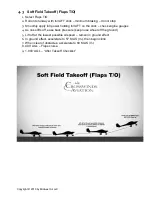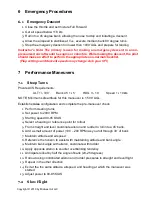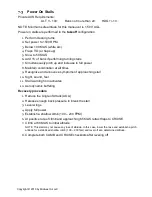
Copyright © 2019 by Midwest Air LLC
Second Crosswind Leg (Crosswind)
1.
Roll out wings level, crabbing away from the boundary
2.
Manage crab angle to maintain 1/2 mile distance from boundary
3.
At field boundary edge, turn downwind
4.
Start with moderate bank
5.
Increase bank angle gradually during the turn as ground speed increases
Summary of Contents for DA20 C1 Eclipse
Page 1: ...Copyright 2019 by Midwest Air LLC DA20 C1 Eclipse Training Manual...
Page 18: ...Copyright 2019 by Midwest Air LLC 5 5 Soft Field Landing Flaps LDG...
Page 20: ...Copyright 2019 by Midwest Air LLC 5 6 Power Off 180 Procedure...
Page 33: ...Copyright 2019 by Midwest Air LLC Eights On Pylons Maneuver...








































